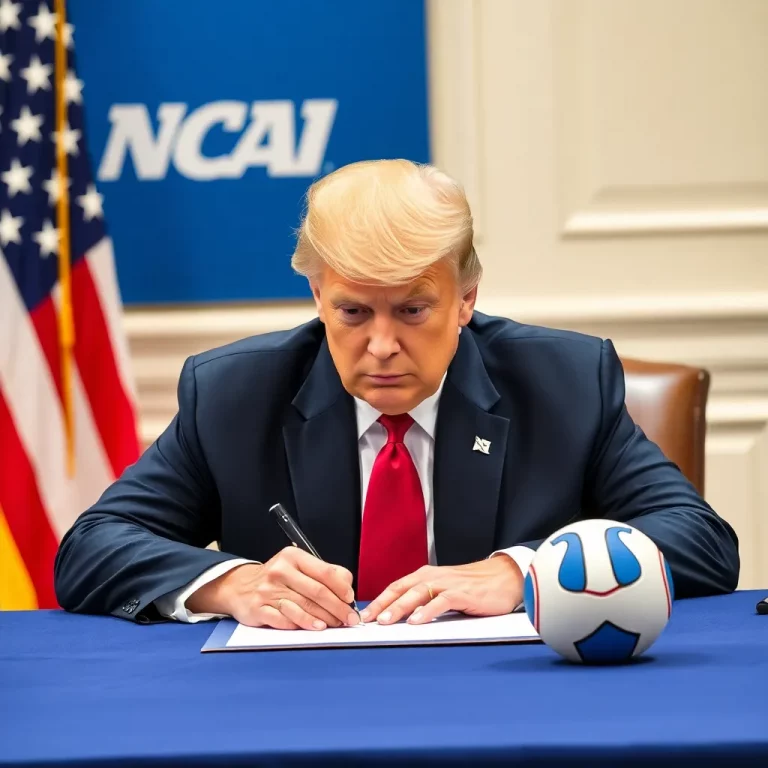Washington, D.C. – On July 24, President Donald Trump signed an executive order aimed at establishing a national standard for name, image, and likeness (NIL) programs within the NCAA. This move comes as part of an ongoing debate regarding NIL rules, which have transformed college sports since they took effect in 2021. The NCAA has faced increasing scrutiny from both local and national lawmakers.
The executive order, described in a White House fact sheet as an effort to “save college athletics,” also emphasizes the importance of expanding scholarship opportunities and supporting women’s and non-revenue sports. Most NIL funds have been directed towards football and men’s and women’s basketball athletes.
One key aspect of Trump’s order states, “it is the policy of the executive branch that third-party, pay-for-play payments to collegiate athletes are improper and should not be permitted by universities.” This does not apply to athletes receiving fair market compensation for activities such as brand endorsements. The ongoing conversation since the recent House v. NCAA legal settlement has raised questions about how collectives contribute to NIL compensation for college athletes.
Additionally, Trump had previously signaled plans to create a commission aimed at addressing major issues in college sports, though no further announcements regarding that commission have been made.
This week, a bill in the U.S. House of Representatives concerning the administration of college athletics successfully passed two committees, awaiting review when Congress returns from summer recess in September. NCAA President Charlie Baker suggested that while he is open to new ideas, the focus should remain on the legislative process rather than executive orders.
The leaders of three House committees welcomed Trump’s order but reaffirmed their commitment to pushing forward with the legislation. The order instructs various cabinet secretaries to address several issues, including rules about athlete transfers and competition seasons. The careful attention is meant to ensure a sustainable future for college sports as NIL deals grow in prevalence.
The order outlines expectations for athletic departments with certain revenue thresholds to maintain or increase scholarship opportunities in non-revenue sports. For instance, those earning more than $125 million in revenue for the 2024-2025 season are encouraged to offer more scholarships than in previous years.
As the sports landscape continues to evolve, this moment highlights the growing complexity of college athletics and the various interests at stake. Lawmakers and collegiate associations are being pushed to work together for a clearer and more stable collegiate athletics environment amidst these changes in how student-athletes can capitalize on their personal brands.


